We have seen things you people wouldn’t believe. A cult classic have its reputation re-evaluated and restored by a series of fan-fueled screenings long after it was unceremoniously “retired” from a theatrical run. A film with no less than six different cuts in circulation. Critics declaring a sequel a masterpiece, while others say it’s “stylish but hollow.” The evolution of basic story elements being considered “spoilers.” All of these moments will be lost in time, like tears in the rain and unlike a legion of tweets bandied about in its name. Time to die.
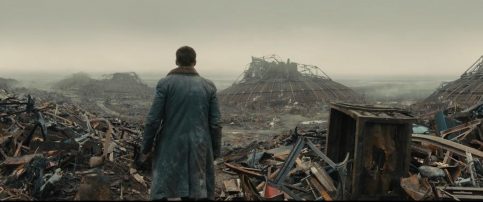
We’re kidding. You would almost assuredly believe every one of these things in 2017.
After decades of rumors, discarded ideas and too many dashed dreams of electric sheep to count, we have been gifted with a Blade Runnersequel, and it is good. Ridley Scott, the man behind the original’s influential vision of Hell-Ay as a perpetual dark night, of the soul or otherwise, is onboard as an executive producer; Denis Villeneuve, a Quebécois director who specializes in moral murkiness, takes the I.P. reins and runs with it. Harrison Ford returns as Deckard, the whiskey-swigging detective (now retired, but not that kind of “retired”) who chased down fugitive “skin jobs” once upon a time. Ryan Gosling is the next-gen model of replicant hunter, handsome and stubbly and moody and rocking a really great trenchcoat. Roger Deakins, a strong contender for the single best cinematographer working today, makes everything look visually sumptuous and totally bleak. And like virtually every movie that’s dared to surf the 1982 film’s urban-nightmare wave, the new Blade Runner finds itself competing against the original’s landmark vision even as it adds to its franchised mythology – a victim of the anxiety of its own bloodline’s influence.
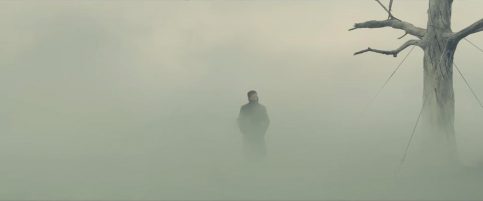
The sense of dystopia déjà vu hovers constantly over Blade Runner 2049, even when Villeneuve gets viewers out of the city and into the scorched countryside. (The small dots you see on the horizon? Those are spoilers, approaching rapidly.) For every scene in which Gosling’s Agent K – his actual name is Joe; the Kafka is strong in this one – walks those mean streets dotted with noodle shops, punks and kaiju-sized hologram ballerinas or hangs out in his apartment with his software-program girlfriend (Ana de Armas), there are set pieces that unfold in dust-bleached farms, debris-filled scrapyards, snowblind wastelands, flooded shores and a red-tinged, toxically radioactive Las Vegas. Variety is the spice of postapocalyptic life, and in following K’s quest to find a missing link between human and “more human than human,” filmgoers are treated to a round robin of cinematic worst-case scenarios.
What’s telling is that almost every one of these visions of social breakdown are immediately recognizable – you could almost fashion a BR 2049 drinking game out of them. Take a shot, every time you see nature recreated out of necessity; down the whole glass every time technology, junky or gleaming, overwhelms the flesh-and-blood elements. For a bonus, down the whole bottle whenever a blind Jared Leto shows up to wax Nietzschean about science run amuck. The shock is now slightly gone from the movie’s future shock, even if key elements – an increased attention to character development, the subtle nuances of the performances, the sly in-jokes, some genuinely unforgettable images, the sense of warmth beneath the chill – occasionally give the sequel the edge over its predecessor. You can still refine and revitalize old sci-fi warhorses (two words: Fury Road), but after decades of waiting for a new Blade Runner, it’s finally being released in a moment when darkest-timeline fiction has crept into a numbing familiarity. We have been slouching toward Peak Dytsopia Fatigue for a while now, and our collective spinner may have finally landed in the middle of Glut Ground Zero.
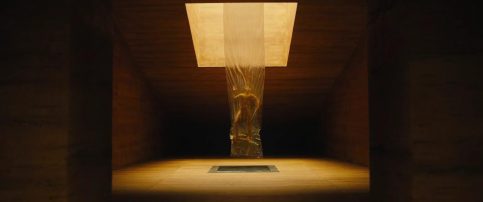
As of now, Villenueve’s sequel is considered a “failure” by those who count opening-weekend beans, citing a $36 million haul – over a three-day holiday weekend to boot – as being way under expectations. (For all of the hat tips to the original in 2049, its deepest-cut homage may be the way the new film replicated the groundbreaker’s underperforming at the box office.) Read the postmortems that started springing up yesterday, and you’ll see a litany of reasons as to why this extraordinary-on-many-levels movie simply failed to resonate with the masses: Ford is no longer a big enough draw, Gosling may not be an above-the-title movie star just yet, not enough women went, the BR brand isn’t strong enough, it was marketed as a slam-bang action flick instead of a meditative, existential Pinocchio riff about what constitutes humanity and who deserves to be part of it. But it might also be that folks have momentarily had enough of shitty futures at the present moment, even those presented in shiny new blockbuster skins. Never mind that its same ol’ subgenre conventions and set design don’t reinvent the wheel the way Blade Runner 1.0 did; it could be the dystopia at our doorstep that, zeitgeist-wise, did the film in.
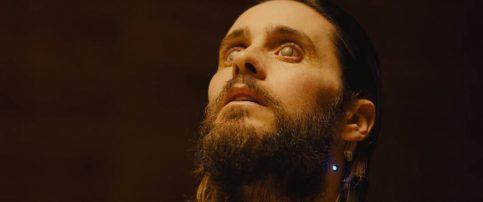
Ever since H.G. Wells began experimenting with bad-future narratives in the late 1800s – and since Metropolis helped codify its visual vocabulary until Ridley Scott introduced a retrofitted tweak to it – these types of fictions have acted as release valves for fears about where we, as a society and a species, are headed. Dystopian fiction has gotten folks through world wars, fascism, periods of great upheaval and anxiety over everything from artificial intelligence to Armageddon. Once young-adult literature picked up on how effective this category of handwringing could be regarding a modern teenager’s uncertainty about, and overall lack of control of, the world around them, a new wave of hunger games and maze runners crested. It’s always been adaptable for whatever waking nightmare du jour was around.
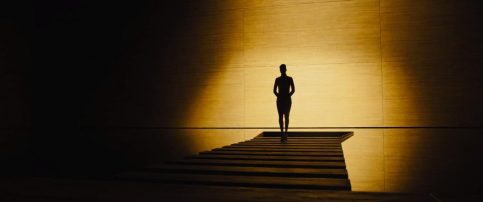
At this point, however, we have temporarily exhausted our options and been outdone by reality. The original Blade Runner was released in a year when nuclear war felt like a hovering threat, ecological disaster was no longer merely a Chicken-Little prospect and Time‘s “Man of the Year” was a computer. Blade Runner 2049 comes out as the prospect of ego maniacs obliterating tens of millions in missile volleys is all too real and natural disasters are popping up with alarming frequency. As for the last parallel, you’re probably reading this article on your laptop or smart phone. For all of the magic and misery and wonder that Villeneuve & Co. have come up with, the franchise may once again be cursed by bad timing. 2049 is even more of a grower than Scott’s chic, visionary center-can’t-hold noir, and given the accelerated pace of both pop culture and fanboy windmill-tilting, it may not take a decade for the film to be embraced as a classic at large. But right now, if we want to luxuriate in a world falling apart, we only need to log on to Twitter or turn on our TV.
By David Fear

You must be logged in to post a comment Login